Low Emission Zones (LEZs) have had a positive impact on air quality in many European cities. They are one of many measures that are implemented in cities to improve air quality. Poor air quality has an impact on our health. Improving air quality improves our health and lets us live longer.
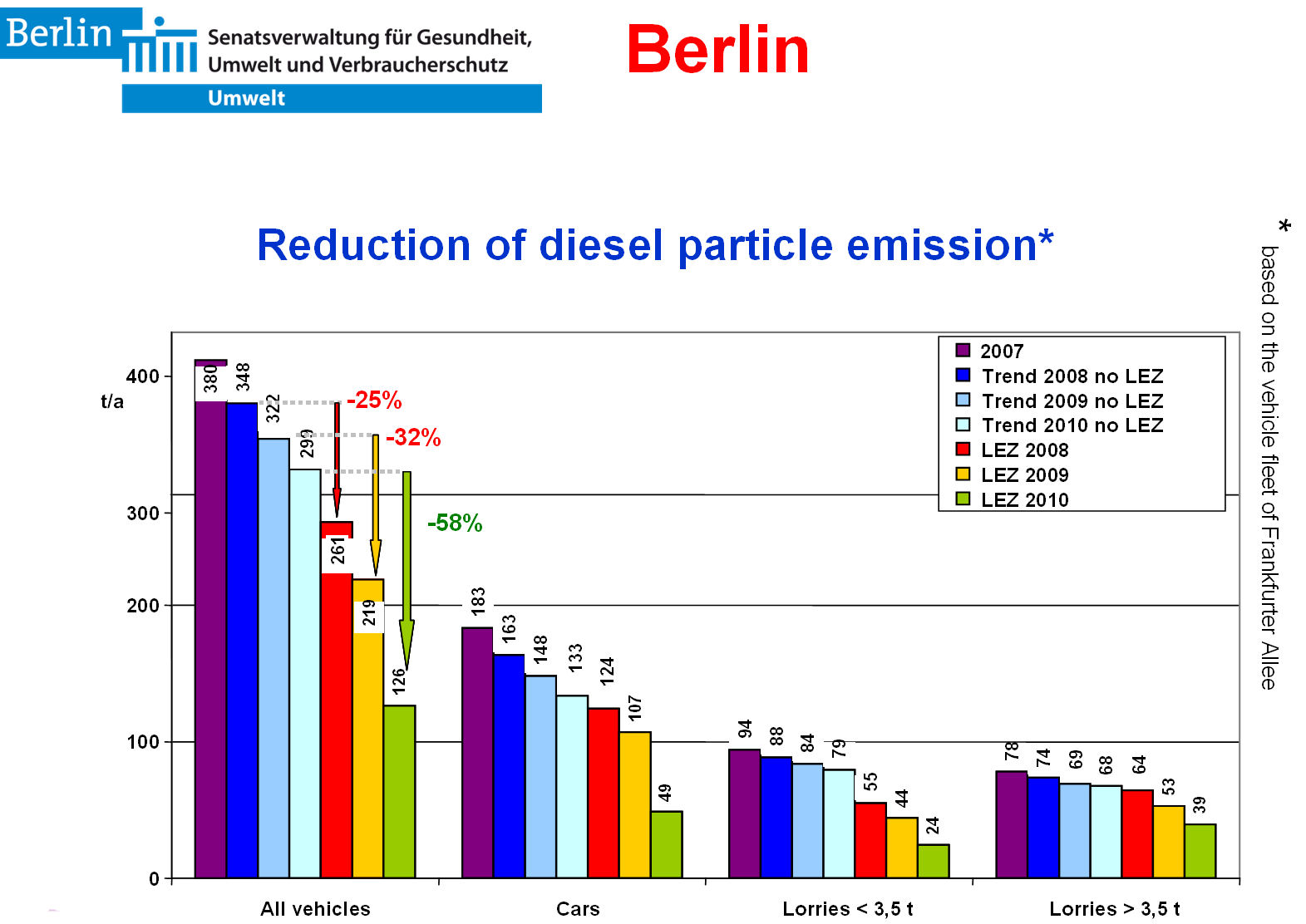
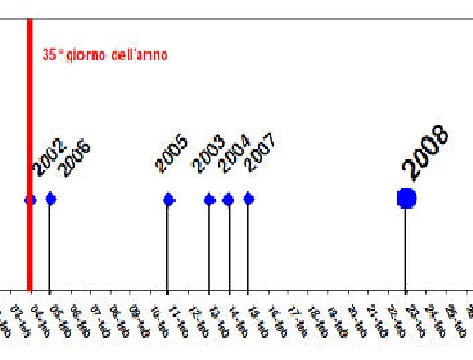
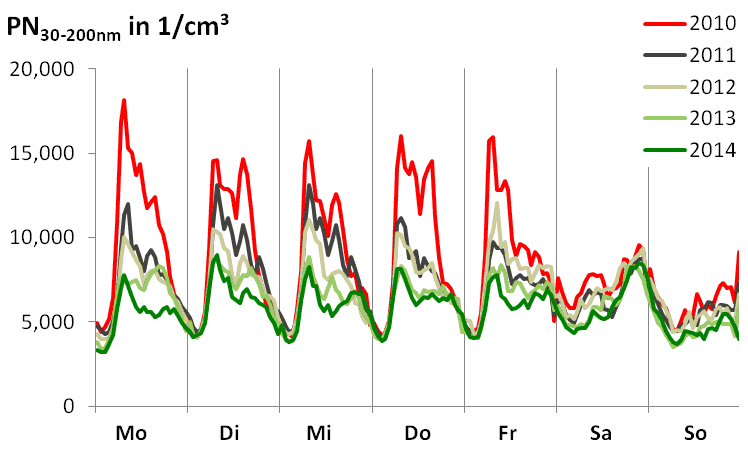
The impacts of Low Emission Zones are discussed here. See here for the impacts of Urban Road Tolls and Access Regulations.
The level of impact LEZs have on air quality depends on many things, such as
- the emissions standard set,
- how well the LEZ is enforced (controlled),
- which vehicle types are affected,
- the geographical area of the LEZ,
- how vehicle operators choose to comply (for example, whether they choose to buy a new vehicle, retrofit a full diesel particulate filter, or buy a second hand vehicle that meets the standard, change fuel type)
- the vehicle fleet before the LEZ was implemented (for example how old, what types of vehicles and percentage of diesel and petrol vehicles)
- the importance of different pollution sources in that city
- how extreme the air quality problems are.
There are various ways to measure the impact of LEZs. Often the emissions of the vehicles in the LEZ are calculated and compared with a calculation for the same situation without an LEZ. Other times the air quality before and after is compared with similar situations.
You can read more about the EU Air Quality Standards on the EU website that need to be met and air quality health impacts on the World Health Organisation website (we take no responsibility for external websites). These may help explain the information below.
LEZs reduce emissions of vehicles. In particular they reduce diesel particulates. These are pollutants that are confirmed by the World Health Organisation to be carcenogenic (see the WHO agency IARC or United Nations press releases). These particles are part of the pollutant known as PM10, which is has an EU Air Quality Standard. However because diesel particulates are very small and PM10 is measured by mass (weight), the diesel particulates make up a small proportion of the PM10, but a proportionally larger impact on health.
Results from a number of cities are given below:
- London
- Berlin
- Milan
- The Netherlands
- Rotterdam's light duty vehicle LEZ
- Leipzig
- Cologne
- Stockholm
- Copenhagen
- Non-air quality impacts
London Ultra LEZ:
The London Ultra LEZ has reduced NO2 by 32 µg/m3, traffic by 9%, CO2 by 13%
Preliminary results show the amazing success from the first six months of the ULEZ :
- Roadside NO2 reduced by 32 µg/m3 in the central zone, a reduction of 36%. This is a Huge reduction, when one compares with what other measures bring!
- NO2 concentrations reduced by 24 µg/m3 at roadside locations in central London, a reduction of 29 %
- No increased NO2 concentrations since the introduction of the ULEZ on any of the boundary road monitoring stations
- Road transport NOx emissions reduced by 31% in the central zone
- Road transport CO2 emissions reduced by 4% (9,800 tonnes) in the central zone. When compared to 2016, this is 13 % reduction
- 3 – 9 % reduction in traffic flows in central London
- 13,500 fewer older, polluting vehicles entering central London
- Average compliance rate with the ULEZ standards is 77 % in a 24 hour period (74 % in congestion charging hours)
For more information on the impacts, see the Mayor of London's ULEZ report.
London LEZ:
Some of the results of the impact of the London LEZ are given below.
Please note: the public buses have higher standards than the LEZ. However, as this was achieved through the public bus contracts and not by the LEZ, these impacts are not included in the impacts of the LEZ. The impacts of the buses with less emission is significant, and also given below.
Impacts of the London LEZ:
- Black Carbon has been reduced by 40-50%
-
NO2: Average concentrations were reduced by 0.12 μg/m3, peak concentration reductions up to 0.16 μg/m3 on polluted streets.
- PM10: Average concentrations reduced 0.03 μg/m3, peak concentration reductions up to 0.5 μg/m3 on polluted streets.
- Emissions of PM10 were reduced by 1.9% (28 tonnes)
- Emissions of NOx were reduced by 2.4% (26 tonnes)
- The feasibility study predicted gain of 5200 years of life, and 310,000 fewer cases of lower respiratory symptoms, 30,000 fewer cases of respiratory medication & 231,000 fewer restricted activity days.
- The Cost Benefit Analysis gave a £250-670 million benefit, £90-250 of which are outside Greater London.
Impacts of public buses with less emission, done together with the LEZ:
Berlin low emission zone impacts:
Berlin has undertaken extensive impact assessments of the LEZ, isolating the impact of the LEZ from other measures and influences.
The LEZ has reduced PM10 exceedences of the EU PM10 air quality standard from 28 to 24 per year, diesel particulate concentrations by 14-22%, & PM10 concentrations by 3% on main roads.
Berlin has reduced 58% of diesel particles, the most dangerous part of particulate matter. A graph of the results in "Reduction of diesel particulate emission" is shown below. The calculations are based on the vehicle fleet of the Frankfurter Allee in Berlin.

(if you are viewing this through automatic translation, the words in the title are "Reduction of diesel Particle emission" and in the key are "Trend 2008 no Low Emission Zone" etc).
The emissions of nitrogen oxides (NOx) lead to NO2 in the air. The LEZ has reduced these emissions by 20%.
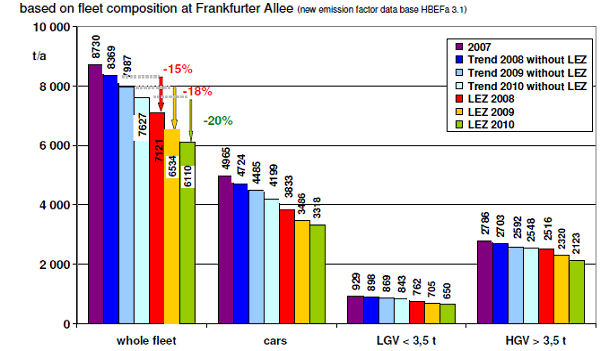
(if you are viewing this through automatic translation, the words in the title are "based on fleet composition at Frankfurter Alle (new emission factor base data HBEFa3.1" and in the key are "Trend 2008 no Low Emission Zone" etc).
Milan Ecopass and Area C impact
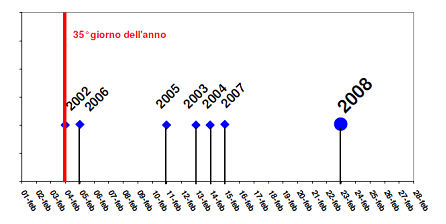
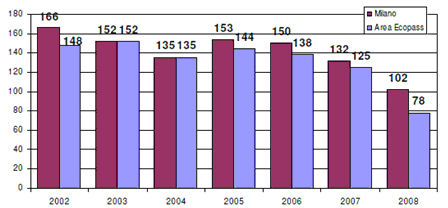
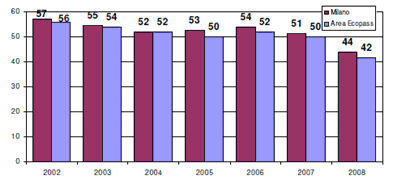
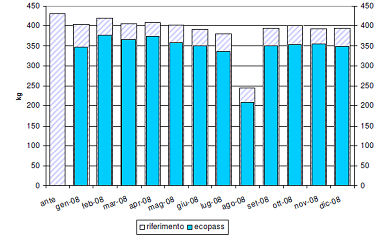
- Reduction of incoming traffic of just over 30%
- During hours of Area C operation, the increase of commercial speed of public transport in the area is 5.7% for buses and 4.7% for trams.
- No evidence the of deterioration in the speed of public transport outside the area
- Impact on air quality emissions:
- PM10 exhaust -19%;
- PM10 total -18%;
- NH3, Ammonia -31%;
- NOx Nitrogen oxides -10%;
- CO2 Carbon dioxide -22%
- Inside Area C compared to external area the following results for Black Carbon:
- Concentrations of Black Carbon (BC) from -28% to -43%;
- Content of Black Carbon in PM10 (ratio BC/PM10) from -16% to -46%;
- Content of Black Carbon in PM2.5 (ratio BC/PM2.5) from -22% to -46%.
- Inside Area C compared to external area the following results:
- Concentrations of Black Carbon (BC) from -28% to -43%;
- Content of BC in PM10 (ratio BC/PM10) from -16% to -46%;
- Content of BC in PM2.5 (ratio BC/PM2.5) from -22% to -46%.
The Netherlands LEZ, in 9 cities:
- The LEZs started from January 2007. In summer 2008, the actual air quality improvements were slightly less than predicted, with improvements between 0 - 2μg/m 3.
- The impact was limited by gradual enforcement and the fact that there were many exemptions for vehicles where diesel particulate filters were not available.
- Both of these were expected to improve and to increase the air quality impact by a factor of 1.5 - 2. The LEZ second phase will also have a greater impact.
- The Dutch enforcement of the LEZ is more strikt now. After the enforcement campaign: in Den Bosch 83% of lorries complied – up from 70%, in Eindhoven 91% of vehicles complied. Vehicles which did not comply and did not have exemptions must pay a €150 fine. This increased compliance will increase the impact of the LEZ on air quality.
Rotterdam
Rotterdam's LEZ was extended in January 2016 to affect cars and light duty vehicles. It now bans diesel vehicles registered after 1 July 2001 and petrol vehicles and LPG vehicles registered after 1 July 1992.
The impact of this scheme has been to reduce the number of severely polluting cars by half. Before the extended LEZ, of the up to 700 000 vehicles enter Rotterdam, 1.18% were older models with high emissions. Since the extended LEZ this has dropped to 0.66%. The city authorities estimate that this reduces emissions of soot by between 20 and 30 %.
The proportion of dirty vehicles is likely to reduce further. There is currently no penalty for violating the ban. However, from 1 May drivers there is a €90 fine penalty.
For more information, visit The Eltis website, our Rotterdam page.
The low emission zone in Leipzig was introduced in 2011 with the green badge (Euro 4 diesel, Euro 1 petrol). The announcement and enforcement of the low emission zone caused an accelerated modernization of the vehicle fleet in the city. Leipzig has the only LEZ in the Saxony region of Germany, as well as the most modern car fleet, due to the LEZ.
The figure below shows the weekly variation of the ultrafine particle number concentration, which corresponds to similar traffic volumes from 2010 (before the LEZ) to 2014. The weekly variation of the soot particle mass concentration is basically identical. The daytime concentration in 2014 was half of that in 2010.
Over the four years of the low emission zone, the highly toxic matter soot and ultrafine particle number concentrations have reduced by 47 and 56%, respectively. This significant reduction was achieved due to the fitting of diesel particle filters to meet the LEZ emission standards. This is similar to the reduction seen in the Berlin LEZ, but using a different assessment method. This strengthens the robustness of both assessments.
Black Carbon is the part of the PM10 that comes from vehicles, and is also the part that is most harmful to health. Black Carbon is also not affected by long range emissions outside the control of the city, which PM10 concentrations are. Source: TROPOS, and Gunter Löschau (Saxon State Office for Environment, Dresden)

Cologne
- The LEZ has been in operation since January 2008.
- Results from the first year of operation show that air quality concentrations in Colognes LEZ have reduced more than the surrounding background. For NO2 by 1.2 μg/m3 (background reduction was 0.5μg/m3), PM10 by 4 μg/m3 and 17 exceedences of the limit value (background reduction 4 μg/m3 and 7 exceedences).
Stockholm
The Stockholm LEZ has been in operation since 1996, and its impact was extensively estimated in 2000. The impact on emissions of particles (PM10) and nitrogen oxides (NOx) are given below.
PM10 emissions NOx emissions
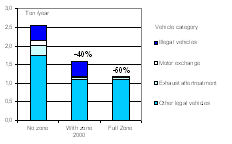
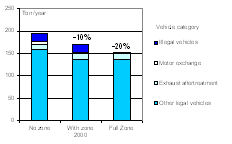
Since 2000, there has been further work in Stockholm to reduce illegal vehicles (those not meeting the standards). Illegal vehicles are now less than 5% of those entering the zone. The contribution of emissions from illegal vehicles will therefore have been reduced.
In looking at the impact on concentrations, the levels of PM0.2 (particles less than 0.2 μm in diameter) have been estimated. These are some of the smallest particles that are of most concern to health. Since diesel particulate exhaust emissions are all PM0.2, they are reduced by the LEZ. The map below represents the estimated percentage reduction in PM0.2 concentrations in Stockholm due to the LEZ.
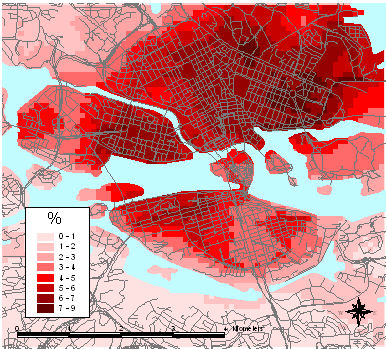
As can be seen from the coloured map, emissions reduced differently in different parts of the city. Where the lorry traffic is heavier there is more impact from cleaner lorries. The map shows that concentrations of PM0.2 were reduced by between 0.5 and 9% with the LEZ. If all vehicles had been fully compliant, then the concentrations would have been reduced by between 0.5 and 12%.
Copenhagen estimated the likely impact of the LEZ in terms of the health impact:
Non-air quality impacts


